India: Public Health and Environmental Contamination
Jul 31st, 2014 | By Sriram Kannan | Category: Environmental Management, India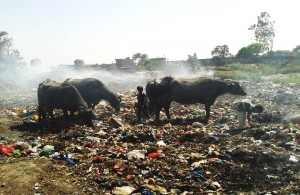
Children & Water Buffaloes in Garbage Dump, Rural India
A lot of progress has been made in India in the past decade in terms of improving the environment and associated impacts on human health, but a lot of work still needs to be done. In rural India, for example, obvious environmental problems with clear adverse health impacts are often allowed to exist without intervention. As the following photographs from Lalpur, Rudrapur, and Karnal, India show, it’s not uncommon to see
- Environmental contamination impacting food for sale;
- Food and beverages being handled in an unsafe or unsanitary manner;
- People living and working amidst environmental contamination without appropriate health and safety protection; and
- Animals intermingling with people and grazing on potentially contaminated garbage.
The local residents’ lack of awareness of the link between environmental contamination and public health impacts continues to be a problem that prevents improvement in public health.
Example 1: Industrial Contamination of Food
Industrial operations that produce airborne contaminants such as paint aerosol or heavy metal dust are often located near restaurants, food stands, and butcher shops, providing a means for food to become contaminated by windblown pollutants.
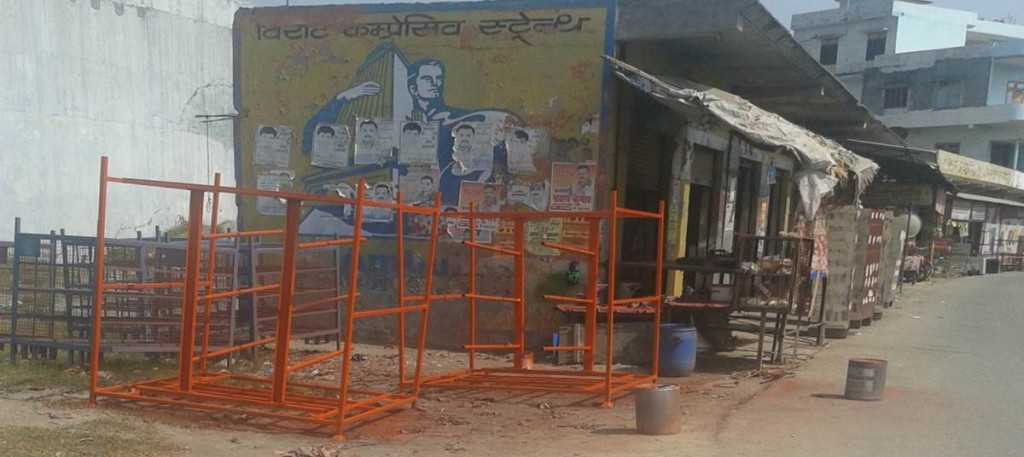
Photograph 1: Paint Shop Next to Butcher Shop in Rural India
In this photograph from Uttarakhand, India, the orange racks were painted in this location, and paint is visible on the soil alongside the racks. The butcher shop is located beneath the cloth awning behind the painted racks approximately 1 to 2 meters away from the zone of nearest paint spraying. Airborne paint mist may have contacted the meat that was sold by the butcher.
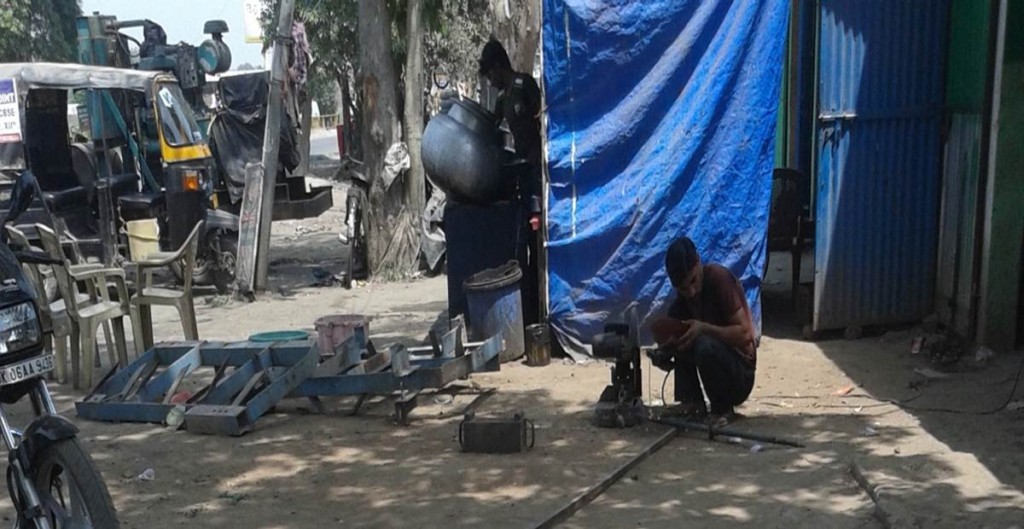
Photograph 2: Metal Shop Near Restaurant in Rural India
In Photograph 2, a metal shop that produces smoke, welding fumes and metal dust is located approximately 2 meters away from a ready-to-eat rice biryani shop. Wind-blown contaminants from the metal shop likely contact the food and equipment used in the restaurant.
A third example of potential food contamination can be seen in the operations of the numerous roadside tea vendors. In places like Lalpur and Rudrapur of Uttarakhand, or Karnal of Haryana, vendors typically use plastic utensils to prepare, stir, filter, and dispense hot tea instead of metal stirrers and stainless steel filters. In one area of Karnal, the author observed roadside tea vendors using plastic toilet mugs for dispensing hot tea. The use of these inexpensive plastic materials, which are likely not food grade, could introduce toxic substances into the tea.
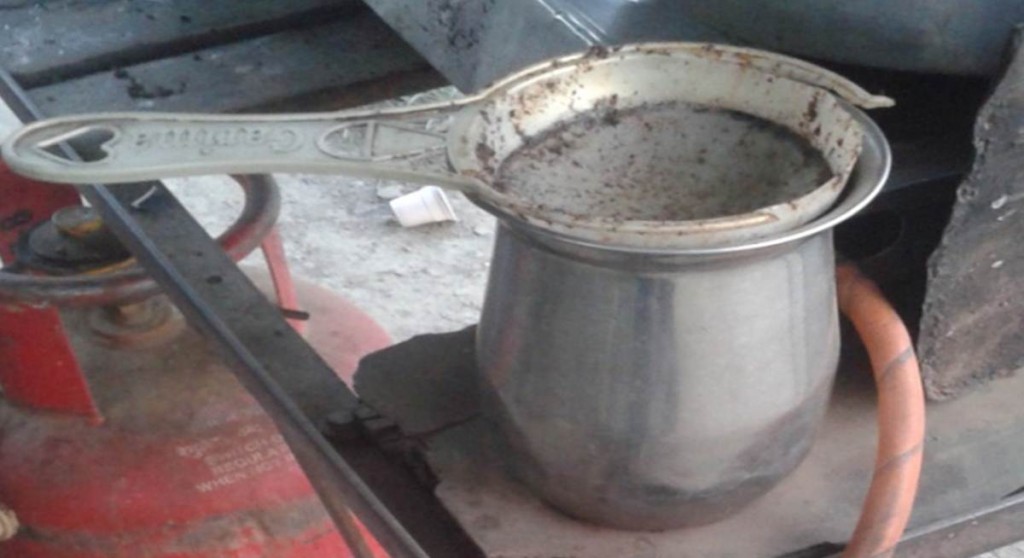
Photograph 3: Plastic Tea Strainer Used by Roadside Tea Vendors in Rural India
Example 2: Garbage Dumps
Open garbage dumps are often located in close proximity to housing areas in rural India, and many people make a living by picking through the garbage. Animals such as water buffalo and cattle also graze and live in the garbage dumps. Every day, part of this garbage is lit on fire, and the smoke, which contains toxic materials, is inhaled by both people and the animals that live, work, and eat in and near the dumps. The impact on the quality of the meat from buffaloes and cattle that feed on the burning garbage is uncertain and needs to be assessed.
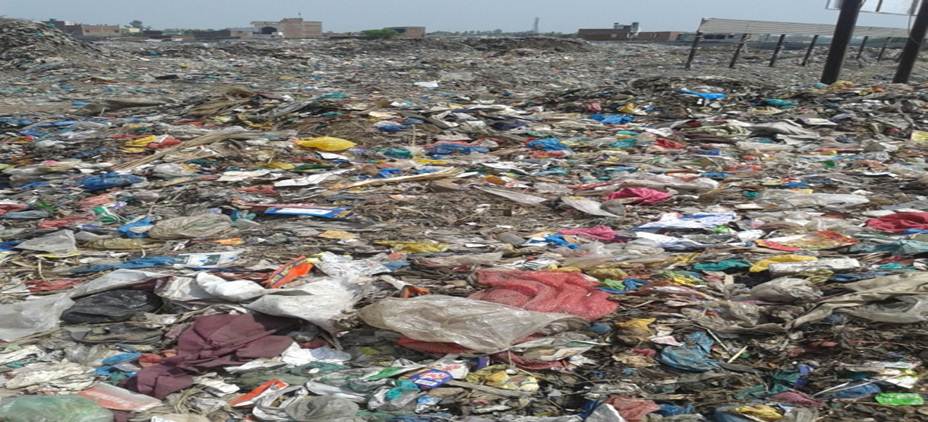
Photograph 4: Garbage Dump in Rural India
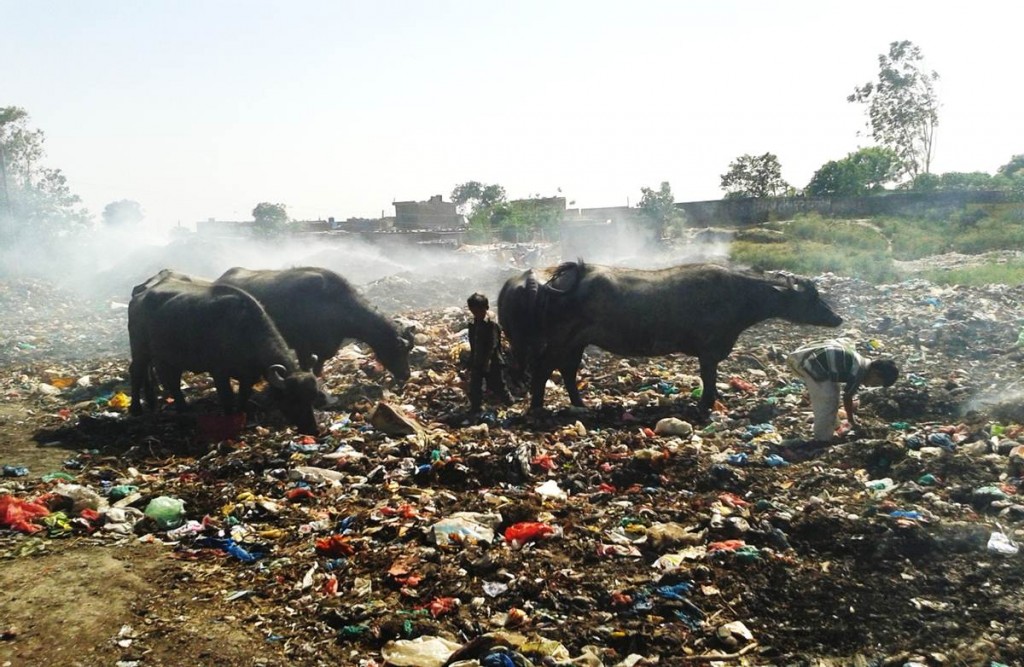
Photograph 5: Children & Water Buffaloes in Garbage Dump, Rural India
Conclusion
Every day in rural India, people are harmed by environmental contamination that they scarcely notice. Because local people lack environmental awareness, polluting behaviors go uncorrected, potentially causing unintended and undesired misery among the affected populations.
About the Author
Sriram Kannan is a food safety microbiologist living in India. He is an alum of Radboud (2011) and PSG (2000).
Photographs: All photographs were provided by the author, Sriram Kannan.
Return to the EHS Journal Home Page

